10 Trips of a Lifetime Everyone Should Take Even if you start with the premise that all travel is good travel, as we tend to around here, there are still those rare trips that well and truly rock your world. Not just while you're on them, using the mind blown emoji for every photo you share—but long after you're home. And quite possibly, for all time. There's no fixed list of essential ingredients, granted, but it probably includes a location that's not right around the corner ( really getting away is key), plus dreamy scenery, cultural riches, immersive experiences—and obviously, life-altering food. When the elements align, there's an indefinable bonus quality—a certain otherness—that adds the perfect pixie dust. We're talking about travel that makes you stop and think about how big—and small—and insanely gorgeous the world is. And while half the fun is figuring out the exact right mix for yourself, we're at least giving you a head start: Check out these 10 stellar options. From Rome to Monte Carlo 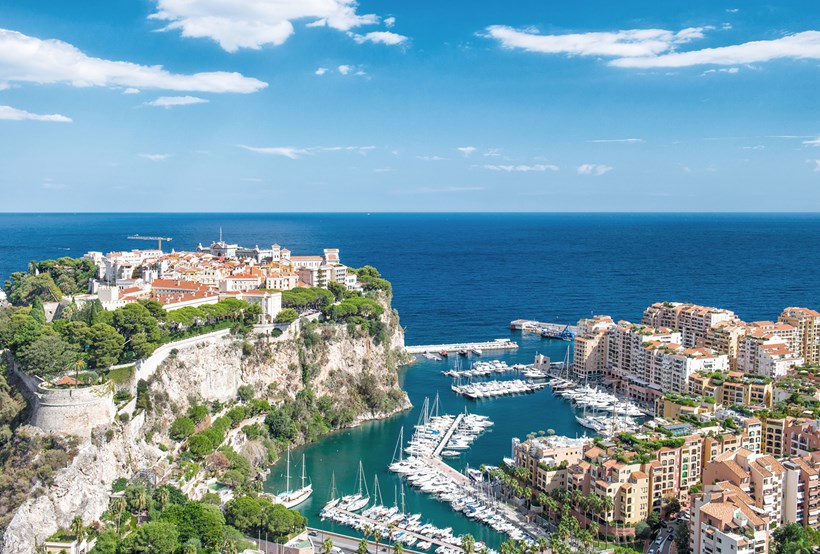 Start to finish, this is a trip of mosts: You'll begin in one of the most ancient outposts on earth, you'll end with one of the most decadent—and in between, you'll pop into some of the most exquisite ports. Yes, we're talking about a cruise here—but a very specific kind: on a ship that's small enough to shimmy into the places the big boys can't. (Or big girls, if every ship's a she to you.) Start to finish, this is a trip of mosts: You'll begin in one of the most ancient outposts on earth, you'll end with one of the most decadent—and in between, you'll pop into some of the most exquisite ports. Yes, we're talking about a cruise here—but a very specific kind: on a ship that's small enough to shimmy into the places the big boys can't. (Or big girls, if every ship's a she to you.)
When in Rome, spend a few days time-traveling between the millennia-old treasures—the Colosseum, the Forum, the Terme di Caracalla—and the modern luxuries (don't miss the Eternal City's only Michelin three-star restaurant, as much for the views from atop the Rome Cavaleri as for the legendary Fagottelli la Pergola). Also wander through the quirkily fairy-tale-like Quartiere Coppede, have an espresso in Trastevere—and take in one last view before you leave the city from the Gianicolo, where the monumental fountain (the one from La Grande Bellezza) is a must. Then, taking a small ship from the nearby port of Civitavecchia, make your way up the Mediterranean coast. Soon, you'll be face-to-façade with the yellow, pink and ochre fishermen's houses that line Portofino's harbor, where you'll see why many a crooner has found his love here—and why Hollywood has, too. Stop into the long-time celeb favorite Hotel Splendido, where the house pesto is a must (and that's saying something in Liguria, the sauce's spiritual birthplace). At a certain point along the coast—whether in chic St. Tropez or old-timey Sanary-sur-Mer (where Jacques Cousteau had a place)—you'll suddenly realize that you're very relaxed, and life, as the T-shirts say, is good. To go full-tilt grand, however, head to Monaco, the tiny principality with glamour to spare, where you can catch the Grand Prix if you time your trip right. Whenever you visit, hit the opulent 18th century casino (does it look familiar—perhaps from Goldeneye or Ocean's Twelve?), where you can try your hand at Twenty-One—or just the Roulette prix fixe at Salon Rose.
Venturing through Vietnam 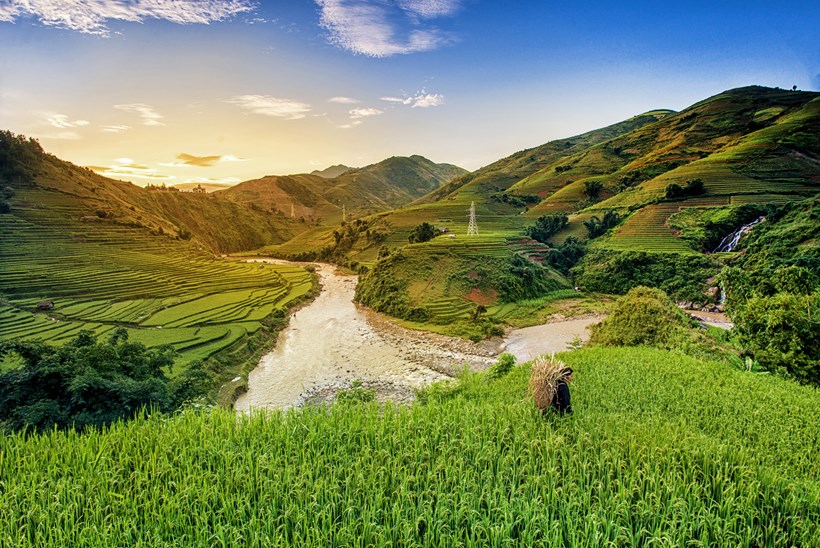 If immersion is what you're after—and it should be on a trip of a lifetime—Vietnam's capital ensures that no other outcome is possible: Step into the streets of Hanoi, and you're sucked into a glorious vortex—scooters whizzing past you from every direction, pagodas and palaces encircling you, and the scent of some of the world's best street food giving you a contact culinary high. Spend at least a couple of days soaking in the mix of Southeast Asian, Chinese and French influences here; eat all you can—including at the Parts Unknown pilgrimage site Bún chả Hương Liên, whose owners have enshrined the table where Anthony Bourdain and Barack Obama shared lunch conversation and beers. And don't leave without trying the local egg coffee at the hidden away Cafe Pho Co, where you'll also get rooftop views of the Hoan Kiem lake. You'll also want to hit Hang Gai, the silk street, for lush textiles and custom-tailored clothes before you start making your way down the length of the country. If immersion is what you're after—and it should be on a trip of a lifetime—Vietnam's capital ensures that no other outcome is possible: Step into the streets of Hanoi, and you're sucked into a glorious vortex—scooters whizzing past you from every direction, pagodas and palaces encircling you, and the scent of some of the world's best street food giving you a contact culinary high. Spend at least a couple of days soaking in the mix of Southeast Asian, Chinese and French influences here; eat all you can—including at the Parts Unknown pilgrimage site Bún chả Hương Liên, whose owners have enshrined the table where Anthony Bourdain and Barack Obama shared lunch conversation and beers. And don't leave without trying the local egg coffee at the hidden away Cafe Pho Co, where you'll also get rooftop views of the Hoan Kiem lake. You'll also want to hit Hang Gai, the silk street, for lush textiles and custom-tailored clothes before you start making your way down the length of the country.
Once you're off, you'll find yourself in a whole series of otherworldly settings—from the limestone outcroppings you'll want to boat through in Halong Bay to the terraced rice fields you'll want to bike around in Nam Cang village. Hike through hills and cardamom fields, kayak across mountain-ringed lakes, and watch the water buffalo go by. Once you reach Ho Chi Minh, take a day trip to the extravagantly painted Cao Dai temple, home to a unique blend of Buddhism, Christianity and Confucianism. But whatever the belief system you subscribe to (or don't), you can't help but feel transported here.
London to Paris 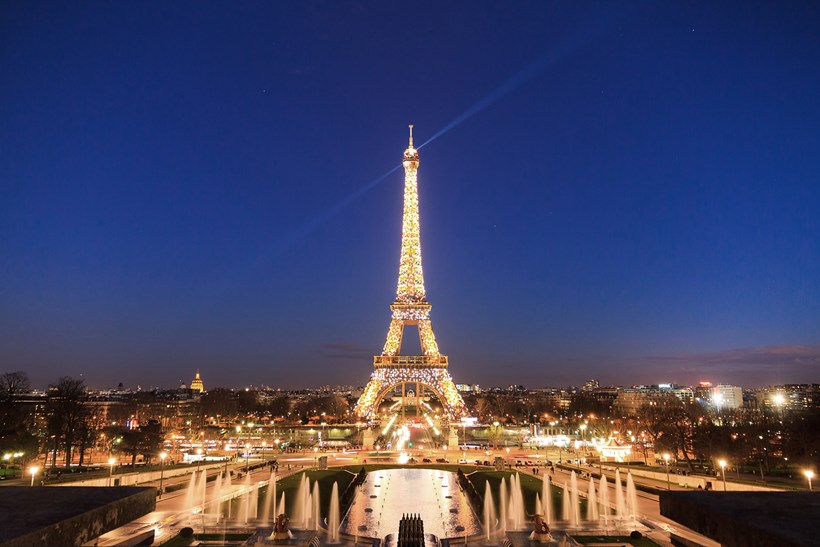 Pair two grandes dames—especially two that have so much going on this year—and you've got one epic European culture-fest. On the English side of the Channel, you'll find a yearlong 200th birthday party for Queen Victoria—to say nothing of the literal birth day revelry that awaits the newest member of the royal family, Baby Sussex. At the museum named for the child's great-great-great-great grandparents, you have the rare opportunity to catch the brand new Mary Quant exhibit along with the already sold-out Christian Dior: Designer of Dreams exhibit (for which a limited number of extra tickets will become available daily). Also be sure to see the Tate Britain's Sixty Years, a retelling of the story of modern British art through a female lens—and the museum's biggest show of the year. On a more somber note, the city will be commemorating the 75th anniversary of D-Day with special exhibitions at the Churchill War Rooms, among other Imperial War Museums. Pair two grandes dames—especially two that have so much going on this year—and you've got one epic European culture-fest. On the English side of the Channel, you'll find a yearlong 200th birthday party for Queen Victoria—to say nothing of the literal birth day revelry that awaits the newest member of the royal family, Baby Sussex. At the museum named for the child's great-great-great-great grandparents, you have the rare opportunity to catch the brand new Mary Quant exhibit along with the already sold-out Christian Dior: Designer of Dreams exhibit (for which a limited number of extra tickets will become available daily). Also be sure to see the Tate Britain's Sixty Years, a retelling of the story of modern British art through a female lens—and the museum's biggest show of the year. On a more somber note, the city will be commemorating the 75th anniversary of D-Day with special exhibitions at the Churchill War Rooms, among other Imperial War Museums.
Of course, you shouldn't spend your entire visit in museums: Drink in the views (plus a bit of bubbly, if you book a tasting) on the London Eye, have tea at the Ritz or Savoy (don't skimp on the clotted cream with your scones), take in a show in the West End, check out Banksy's graffiti in Shoreditch, and stroll through Queen Mary's Rose Garden (12,000 rose bushes and counting) in Regent's Park before you jump on the high-speed Eurostar across the Chunnel to Paris. Once you're done gaping at the Eiffel Tower and zinc-topped limestone buildings, hop a boat down the Seine and marvel at the gorgeous array of bridges that span the river. Go to Notre Dame, then line up for a small scoop of the famed nearby Berthillon ice cream. (Try the cassis sorbet. You're welcome.) Of course, you'll want to say hello to Mona Lisa, but don't miss the Courtauld Collection at Fondation Louis Vuitton—or the Adventure of the Blue Rider at Musée de l'Orangerie. And this trip of a lifetime will obviously involve the cuisine the city is known for—whether a pull-out-all-the-stops meal at one of the city's oldest restaurants, or the prize-winning brioche feuilletée at Pâtisserie des Rêves, or hours' worth of glorious grazing at the Taste of Paris Festival.
The Galapagos Islands 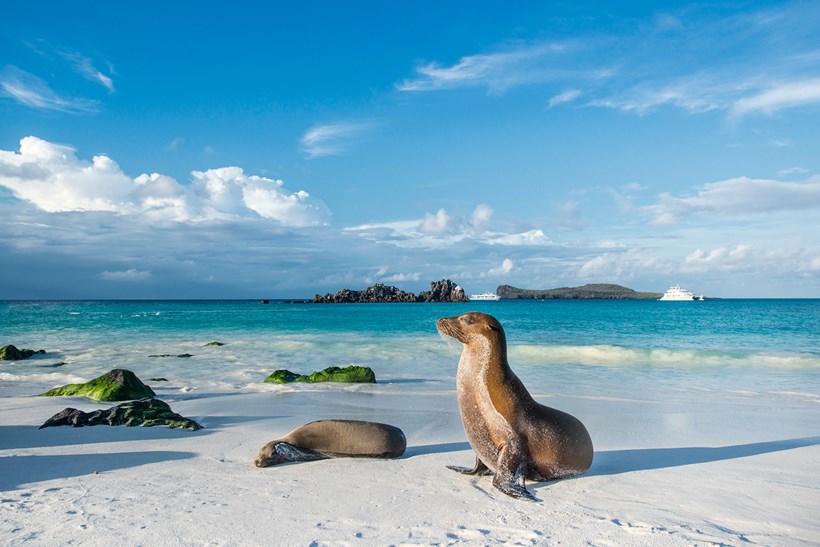 Unleash your inner naturalist in one of the most storied spots on earth: The Ecuadorian archipelago known as the Galapagos Islands, where Charles Darwin famously developed his Theory of Evolution. The animals still thriving here are the main attraction—you'll get up close and personal with sea lions, giant tortoises, mountains of iguanas and blue- and red-footed boobies, among other colorful characters—but the landscape itself is stunningly varied, with sugary beaches, brooding cliffs, black lava formations and water in every imaginable shade of blue. The way to go: a small ship staffed with naturalists who'll have you ready to defend a dissertation on wildlife conservation—and who'll get you out kayaking, hiking and snorkeling (ever seen penguins, tropical fish and hammerhead sharks over the course of a single swim?). Unleash your inner naturalist in one of the most storied spots on earth: The Ecuadorian archipelago known as the Galapagos Islands, where Charles Darwin famously developed his Theory of Evolution. The animals still thriving here are the main attraction—you'll get up close and personal with sea lions, giant tortoises, mountains of iguanas and blue- and red-footed boobies, among other colorful characters—but the landscape itself is stunningly varied, with sugary beaches, brooding cliffs, black lava formations and water in every imaginable shade of blue. The way to go: a small ship staffed with naturalists who'll have you ready to defend a dissertation on wildlife conservation—and who'll get you out kayaking, hiking and snorkeling (ever seen penguins, tropical fish and hammerhead sharks over the course of a single swim?).
Don't miss a stop in Quito, Ecuador's Andean capital and a UNESCO World Heritage site—especially gorgeous after a years-long, $200 million facelift. The city is built on Incan remains and rife with Baroque churches and monasteries. Keep your energy up with maracuya (passion fruit) juice and addictive empanadas de viento (fluffy cheese empanadas dusted with sugar), and consider extending your stay at a recently opened hotel that encourages you to go local.
A twirl through Tuscany 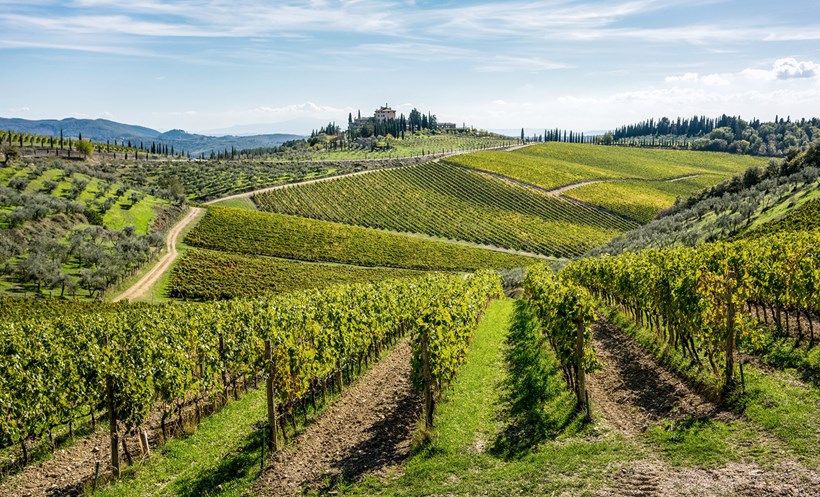 If you don't fall hard for Tuscany, you don't have a pulse, period. There are the beautiful rolling hills dotted with elongated cypress trees; the ubiquitous vineyards; the medieval hill towns—and everywhere, the most amazing food, from an otherwise lowly breadstick baked to perfection to the most decadent, truffle-topped creations. Start your journey in the Renaissance treasure that is Florence, where 2019 brings city-wide celebrations of native son Leonardo Da Vinci on the 500th anniversary of his death. Of course, you should also see such masterpieces as Michaelangelo's David at the Galleria dell'Accademia and the magnificent Massacio fresco tucked into the tiny Brancacci Chapel. Walk over the famed medieval Ponte Vecchio—and hey, this being a trip of a lifetime, pick up a bauble from Fratelli Piccini, one of the bridge's most storied jewelers (and if you're planning to propose to your travel partner in the foreseeable future, note that this the ultimate two birds/one stone opp). If you don't fall hard for Tuscany, you don't have a pulse, period. There are the beautiful rolling hills dotted with elongated cypress trees; the ubiquitous vineyards; the medieval hill towns—and everywhere, the most amazing food, from an otherwise lowly breadstick baked to perfection to the most decadent, truffle-topped creations. Start your journey in the Renaissance treasure that is Florence, where 2019 brings city-wide celebrations of native son Leonardo Da Vinci on the 500th anniversary of his death. Of course, you should also see such masterpieces as Michaelangelo's David at the Galleria dell'Accademia and the magnificent Massacio fresco tucked into the tiny Brancacci Chapel. Walk over the famed medieval Ponte Vecchio—and hey, this being a trip of a lifetime, pick up a bauble from Fratelli Piccini, one of the bridge's most storied jewelers (and if you're planning to propose to your travel partner in the foreseeable future, note that this the ultimate two birds/one stone opp).
While there's no such thing—ever—as getting your fill of Florence, an entire stunning countryside awaits, so pick up some rental wheels and head to Montecatini, home to regal spas that channel the areas thermal springs. Just half an hour away is Lucca, whose ancient city walls you can walk or even bike. Though it's known as the City of One Hundred Churches—with stunning cathedrals and chapels lining its cobblestone streets—Lucca is also home to what many consider the best gelato in all of Italy. Taste as many flavors as possible (in the name of thorough research, of course), but don't miss the gianduia. And superfoodies take note: You're just about two hours away from the top-ranking restaurant on the World's 50 Best List: Chef Massimo Bottura's Osteria Francescana (which in and of itself, would make for the trip of a lifetime, in many eaters' estimation).
Japan's Golden Route 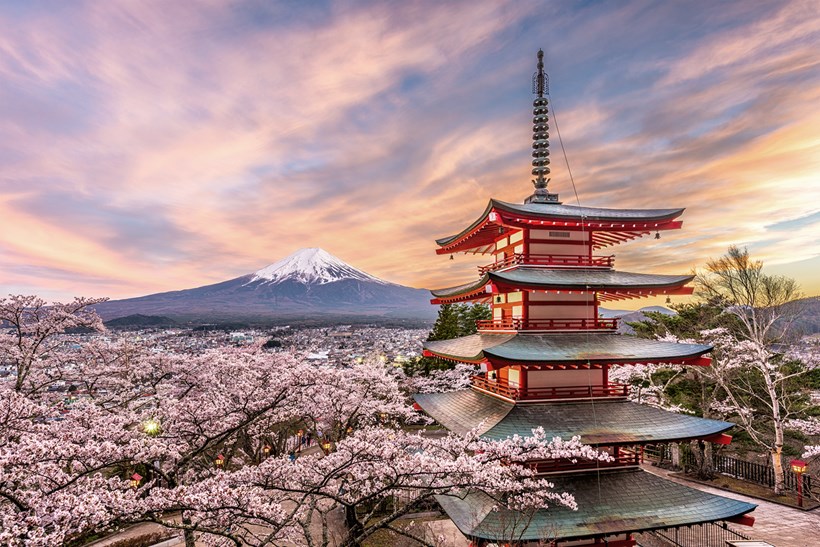 Though magical under any circumstances, the so-called Golden Route is about to turn the most ethereal shade of pink—and if you act fast, you can get here for the legendary cherry blossom display along this trail between Tokyo and Kyoto. Though magical under any circumstances, the so-called Golden Route is about to turn the most ethereal shade of pink—and if you act fast, you can get here for the legendary cherry blossom display along this trail between Tokyo and Kyoto.
The nation's capital is always a hive of activity, from early-morning auctions at the city's brand new fish market to late-night rounds at the izakayas (some big enough to serve 10 patrons, max), but cherry blossom season sends the city into hyperdrive. Hanami—the ritual of celebrating the blooms through picnics, strolls and general merriment—will fill the paths of the Shinjuku Gyoen National Garden, Ueno Park and Rikugien Garden, among others. But don't leave town without seeing the cherry blossoms at the iconic Sensoji Temple. Making your way south, continue the sensory overload—and we mean that in the best way—with a stop at Yamanaka Onsen, a hot spring mountain, where you should stay in a traditional ryokan. At the nearby volcanic national park of Hakone, take a boat ride with epic views of Mt. Fuji. And as you travel through the countryside, stop at Nata-dera Temple, an ancient Buddhist complex of buildings perched on cliffs and tucked into caves. Once in Kyoto, you'll find plenty more cherry blossom viewing opps—Maruyama Park, the Philosophers Path and the Kamogawa River, to name a few—but leave time for the other neighborhood flora, too: specifically, the lush mountain forests of the Fushimi Iniri Shrine and the surreal Arashiyama Bamboo Grove. To see how bamboo shoots are used to exquisite effect in the local cuisine, head to one of the city's embarrassment of Michelin-starred restaurants in the storied Gion (read: Geisha) quarter.
Botswana bliss 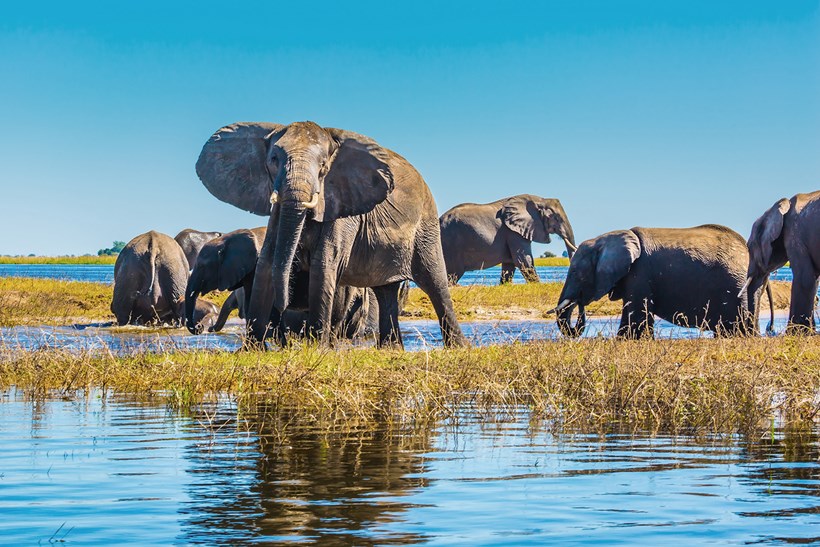
Botswana may be landlocked, but when seasonal rains send water rushing into the legendary Okavango Delta, the place becomes an IRL Disney epic, with all manner of beast wading (or running, if a peckish lion's around) through these waters. So astonishing is the local ecology that UNESCO has added it to the World Heritage list: "An exceptional example of the interaction between climatic, hydrological and biological processes...the Okavango Delta is home to some of the world's most endangered species of large mammal, such as the cheetah, white rhinoceros, black rhinoceros, African wild dog and lion." Seeking them out (along with their less endangered compatriots) will become your main objective as soon as you land. And though local safari vehicles are perfectly accustomed to waterlogged game drives, one of the most sublime wildlife experiences you can have—here or anywhere—is to boat out among the ellies, hippos and zebra, or go on a heli-safari. Back at your camp, the wildlife show typically continues, with creatures ambling by as you laze in a hammock or plunge pool. The luxe-leaning area lodges—i.e., the ones befitting of a trip of a lifetime—also offer everything from massage on your balcony to private barbecue dinners under the stars.
Island-hopping through French Polynesia 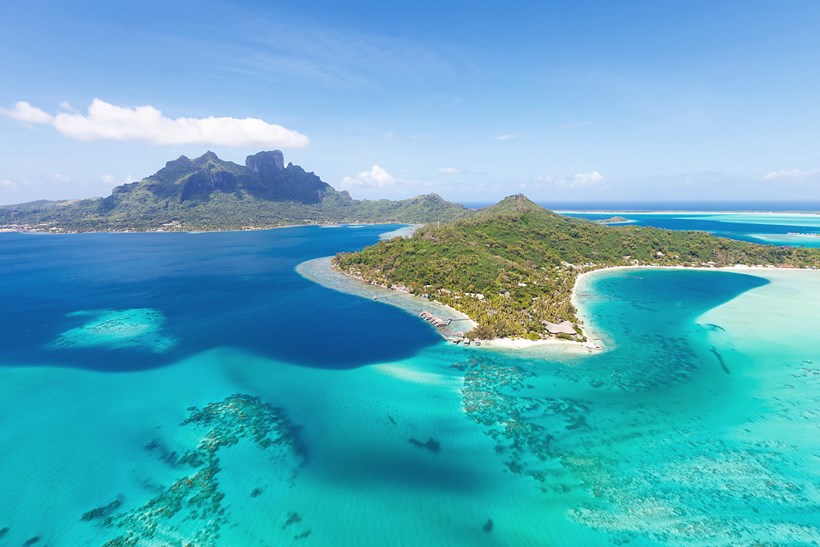 Raise your hand if you shoulda, coulda, woulda gone to the South Pacific on your honeymoon. For anyone still dreaming of those hidden turquoise coves, cascade-filled jungles and powdered sugar motus, we say go get 'em—and go big: There are so many unreal islands to choose from, don't stop at one. Look for cruises that string together at least three of the Society Islands (a perfect trio: the pointy-peaked Bora Bora, the Edenic Moorea, and the vanilla-scented Taha'a). Raise your hand if you shoulda, coulda, woulda gone to the South Pacific on your honeymoon. For anyone still dreaming of those hidden turquoise coves, cascade-filled jungles and powdered sugar motus, we say go get 'em—and go big: There are so many unreal islands to choose from, don't stop at one. Look for cruises that string together at least three of the Society Islands (a perfect trio: the pointy-peaked Bora Bora, the Edenic Moorea, and the vanilla-scented Taha'a).
If you've got a bit more time, try to tack on the Tuamotus as well (divers love Rangiroa, while the shallows of Fakarava are so full of marine life that snorkelers do particularly well in this UNESCO biosphere reserve). And if—in the trip-of-a-lifetime spirit—you want to go for broke, add the Marquesas, too. On Hiva Oa alone, you'll find the archipelago's largest tiki, a series of impressive petroglyphs—and the graves of Paul Gauguin and Jacques Brel.
Spain's dynamic dos 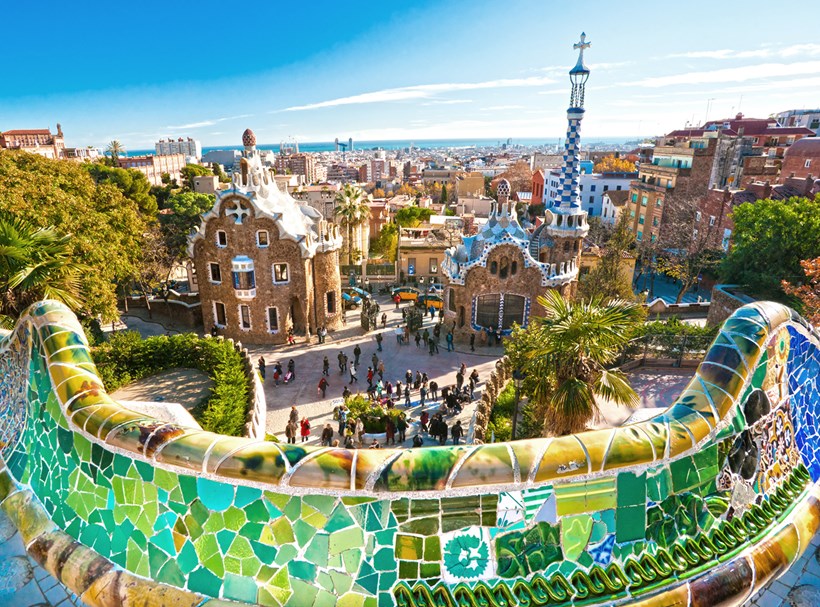
On its own, Madrid makes for a stellar getaway. Ditto for Barcelona. But combine the two—and throw in some major local happenings—and you've got one for the books. Start in Bohemian Barcelona, where the Mediterranean makes for a gorgeous, if familiar, backdrop—while the completely original architecture of Gaudi transports you to another realm. His tile-covered structures in Parc Guell will convince you that you've wandered into a Dr. Seuss drawing and the Sagrada Familia— having just received the permits to complete construction, 136 years into the job!—will simply awe you. Also spend time on Las Ramblas boulevard, the pulse of the city, where you'll find street performers, cafes, and La Boqueria—a jaw-dropping food market, filled to the rafters with all manner of meats, cheeses, pastries and candies. Visit the Gothic Quarter, the oldest part of town, and join the locals for afternoon churros and hot chocolate, an especially welcome treat if you're here in the fall or winter. Next stop, after traveling first class on a high-speed train (now's no time to skimp): Madrid, where a global cultural icon—the Museo del Prado—happens to be celebrating the big 2-0-0. Though the museum's exact birthday will take place in November, you'll find various commemorative exhibits all year. If you are here in November, also note that one of the city's patron saints—the Virgen de la Almudena—gets a big fiesta on the 9th, with a procession, mass and traditional costume and dance parties in the street. You'll also want to visit the Reina Sofia museum (home to Picasso's Guernica); the stunning Royal Palace, and Botín—not just Madrid's oldest restaurant (where Goya once waited tables!), but the world's oldest, according to Guinness World Records.
A deep dive Down Under 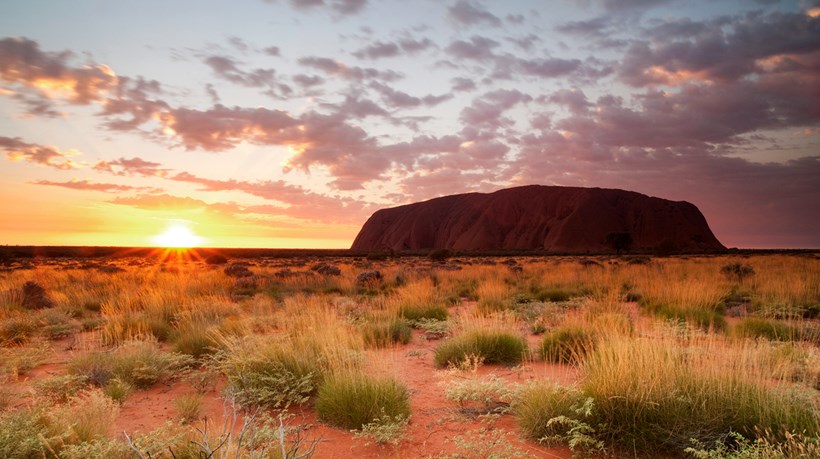 Yes, Oz is dauntingly huge—what with it being the world's only country and continent. But this journey being a trip of a lifetime, grant yourself a couple of weeks, and you can cover a shocking amount of gorgeous ground (internal flights, even to the boonies, are both plentiful and reasonable in Australia). Of course, you want to check out Sydney, the harbor, the Opera House, maybe a nearby vineyard and the surfers at Manly Beach. Or perhaps your idea of the perfect city stay is Melbourne, with its art-filled alleys, cult-favorite restaurants and nearby natural wonders. Point is, once you've had a taste of Australia's most celebrated cities, get out into the wild. Yes, Oz is dauntingly huge—what with it being the world's only country and continent. But this journey being a trip of a lifetime, grant yourself a couple of weeks, and you can cover a shocking amount of gorgeous ground (internal flights, even to the boonies, are both plentiful and reasonable in Australia). Of course, you want to check out Sydney, the harbor, the Opera House, maybe a nearby vineyard and the surfers at Manly Beach. Or perhaps your idea of the perfect city stay is Melbourne, with its art-filled alleys, cult-favorite restaurants and nearby natural wonders. Point is, once you've had a taste of Australia's most celebrated cities, get out into the wild.
Consider a flight to Alice Springs, in the nation's stunning Red Center (or Red Centre, as locals would prefer), where just standing before Uluru merits the transoceanic flight. Hike around the massive, ancient and locally sacred rock—but not up it. Catch Bruce Munro's recently extended—utterly surreal— light installation at the site, either over dinner or at dawn. Learn about Anangu dot-painting—and maybe even take a class in it—from local masters. And don't miss a hike through Kata Tjuta's Valley of the Winds or Walpa Gorge. If you stay at Longitude 131, as you'll want to consider under these trip-of-a-lifetime circumstances, ask that your bespoke outdoor daybed be made up for at least one overnight under the stars (there will be a fire, liqueur and treats at turndown, FYI). From Alice Springs, it's a two-hour flight to Cairns, a gateway to not only the Great Barrier Reef, (where you can help with preservation efforts), but the absurdly lush and wildlife-rich Daintree Rainforest—generally believed to be 180 million-ish years old, and the most ancient rain forest on earth. Cruise the Daintree river to look for crocs, swim in the (croc-free) Mossman Gorge and zip through the canopy. And consider a stay at eco-luxe Silky Oaks Lodge. Also consider visiting one of Australia's bounty of nature-rich islands: Lord Howe, Kangaroo—or, well, the entire state of Tasmania. Happy travels, mate |